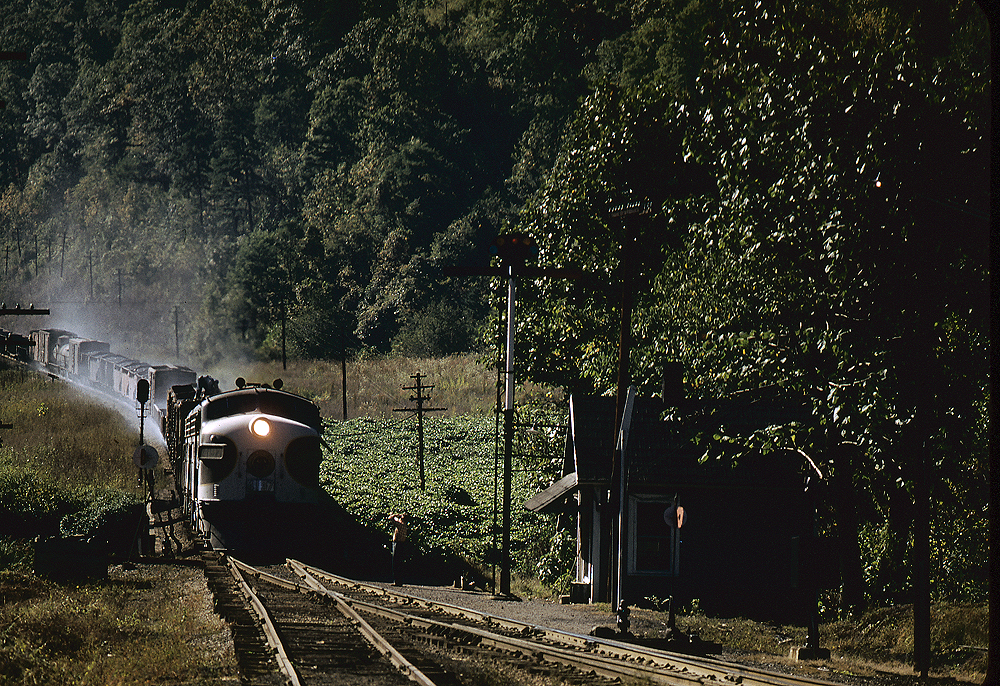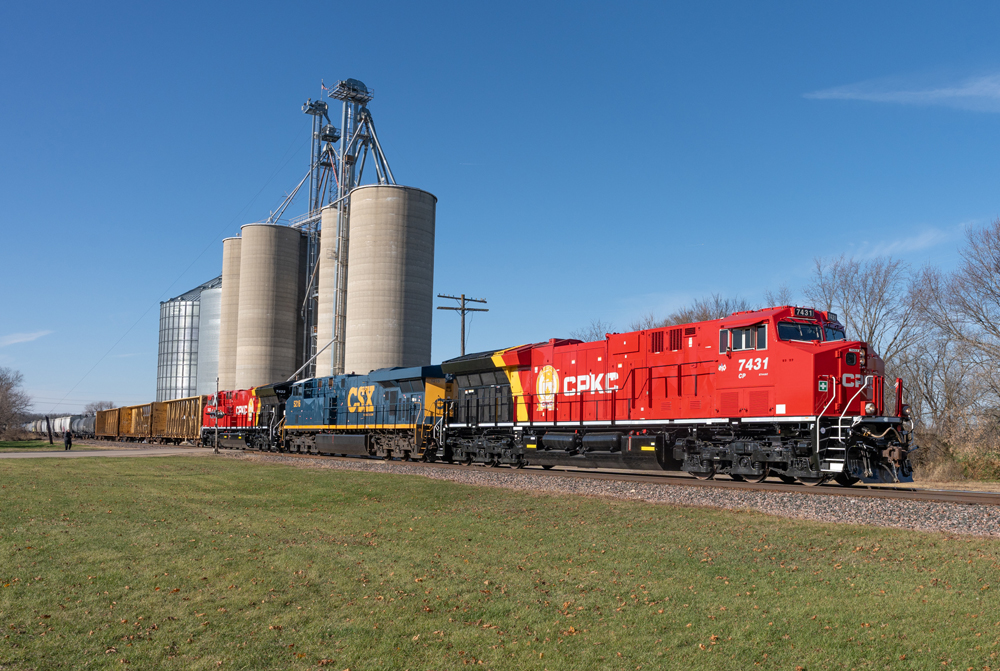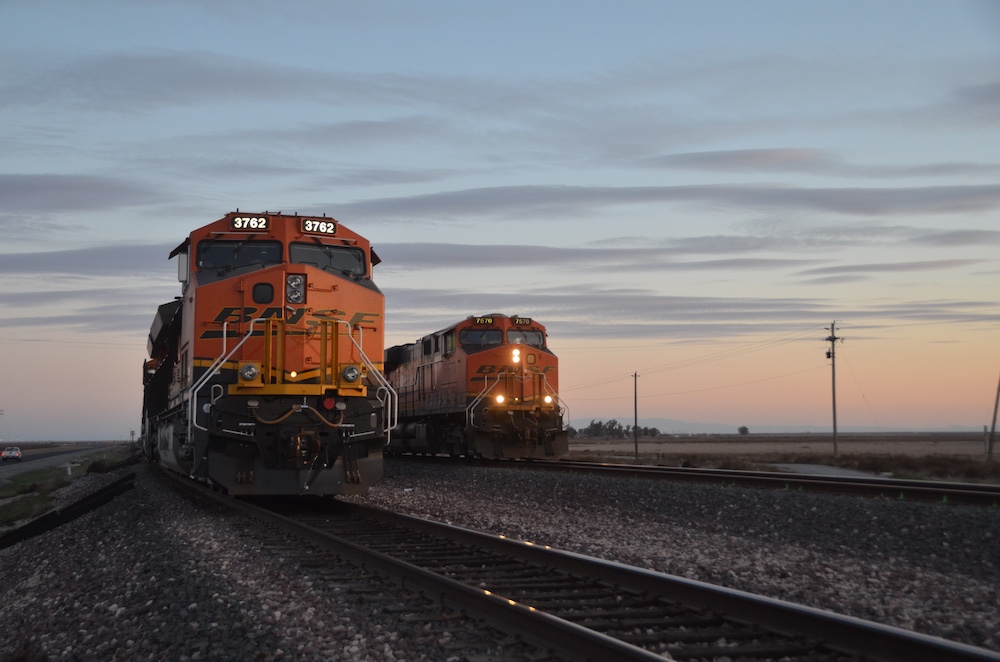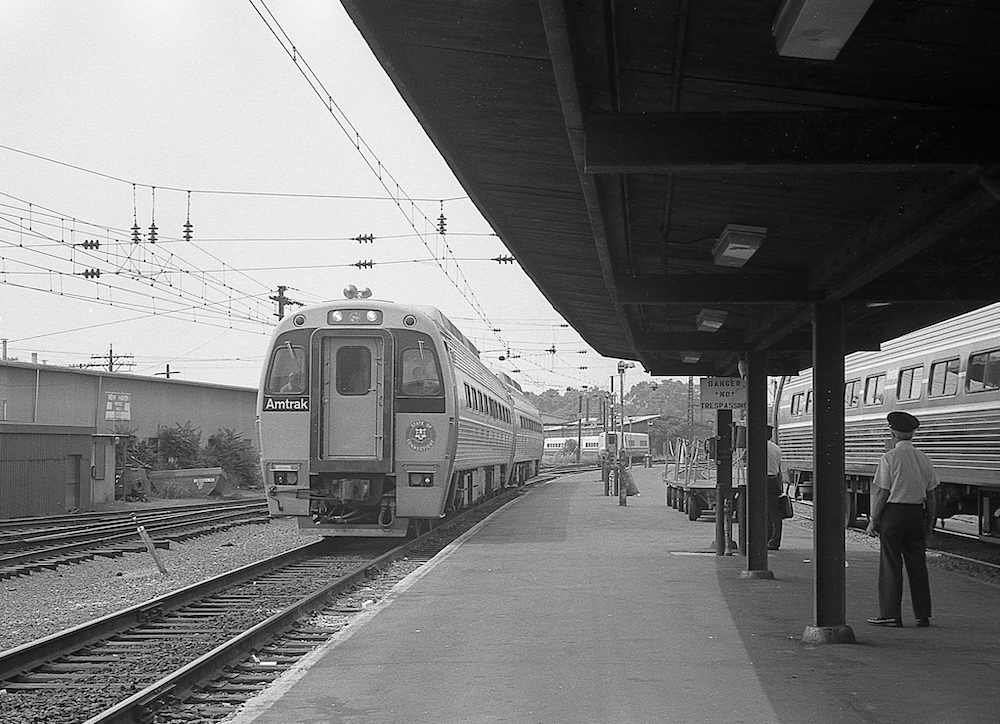Adhesion between the wheels and running rails then allows the vehicle to move along the track, often pulling or pushing other, nonpowered, vehicles. The ultimate source of the power (steam boiler, diesel engine, electric power plant) and its method of transmission to the wheels (mechanical, electrical, hydraulic) is immaterial – the principle is the same.
Over the long history of railways (carts on rails worked in mines in medieval Europe), several other means of propulsion have been used. A few found niches where conventional adhesion was unsuitable.
Cog railways
The rack-and-pinion system was developed to enable trains to climb grades too steep for adhesion. (One of the most beneficial features of railways – the low friction between steel wheel and rail – is a liability when grades are steep.) To get trains safely up and down grades as steep as 30%, the track is equipped with a toothed rail, or rack, between the two running rails. A powered pinion, or cog wheel, mounted on the rail vehicle engages with the rack, propelling the vehicle along the rails.
Railroads may be exclusively cog-operated, or use a mix of adhesion for relatively level stretches and cog-drive for steep portions.
Cog railroads are rare in North America, but the first one in the world was built up Mt. Washington in New Hampshire, and still runs. The technology was embraced in mountainous countries like Switzerland. Cog drives are not suitable for high-speed, heavy-duty operations.
The Fell system (named for its inventor) was similar to cog railways, but not as widely used. Springs pressed horizontally mounted powered wheels against a central rail laid between the running rails. Because the driving wheels and central rail were smooth, the system was actually based on adhesion, but not adhesion between the running wheels and running rails. The Fell system saw great use in New Zealand.
Cable railways
Cable systems use ground-based power sources to draw rail vehicles along tracks with cables. There are three basic types.
Grip systems employ a cable which is continuously moving at a constant speed. Vehicle movement is controlled by the operator of each vehicle, who engages a “grip” with the cable to move the vehicle and releases it from the cable to stop. Elaborate railways are possible when the cable is placed between and below the running rails. Such cable systems enjoyed brief popularity for street railways before they were electrified. The San Francisco cable car lines were the first, and have long been the most famous, grip-type railways.
Pusher-type cable systems employ a small cable-drawn vehicle often called a barney or mule to move pieces of rolling stock by pushing against them. The barney may have its own set of rails between the main running rails, or run on the main rails. The system has seen limited use in niches throughout the North American railroad network such as locomotive washers, coal-car unloading facilities, and grades too steep for adhesion working.
Railways on which the cable remains permanently attached to the rolling stock are the most common of the cable systems. Conceptually, they consist of a cable looped around a pulley at the top of an incline, with a rail car attached to each end of the cable. This system is used widely on short, steep railways. Many operate on the funicular principle, where the weight of the descending, car helps to raise the ascending car. Because such railways have only two cars, and it is physically impossible for them to meet anywhere but at the halfway point, many funiculars use a single-track or three-rail system (the center rail being shared by the up and down sides) with a passing siding in the middle.
Other alternate railways
Besides funiculars, other railways have used the power of the earth’s gravitational pull as the primary means of moving rolling stock. Some logging operations, for example, needed only gravity and skilled brakemen riding the cars (with no locomotives attached) to move logs from high elevations to lower levels.
The most primitive method of powering railways is the muscle of humans or animals. For centuries miners pushed, or mules pulled, small carts. Horses pulled trains on the Baltimore & Ohio and other early railroads briefly before steam locomotives took over. Street railways also depended on animal power until conversion to cable and electric power; a few survive or have been recreated as curiosities.
At least one transit system uses linear induction (basically an electric motor, one portion of which is along the right of way, the other on the cars) to power its trains.
Wind power proved to be an unsuccessful means of moving rail vehicles. Unlike sailing ships, sail-equipped railcars could not alter their course to accommodate less-than-optimum wind direction.
Also unsuccessful was the use of atmospheric pressure, as short railways in western England and New York City (an early pneumatic subway) proved.













